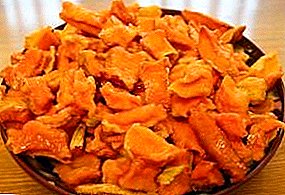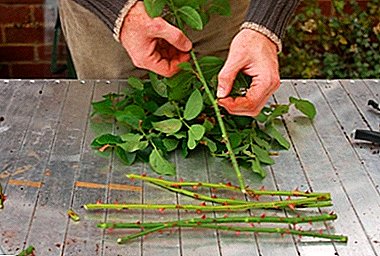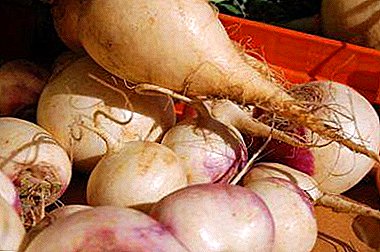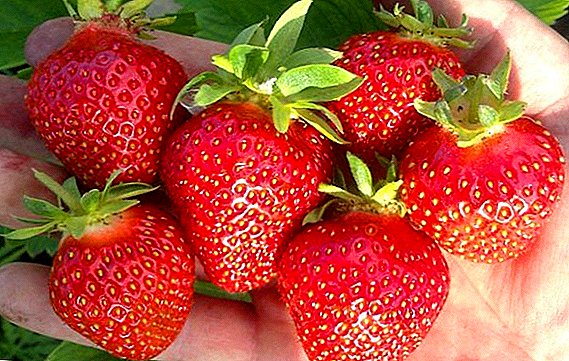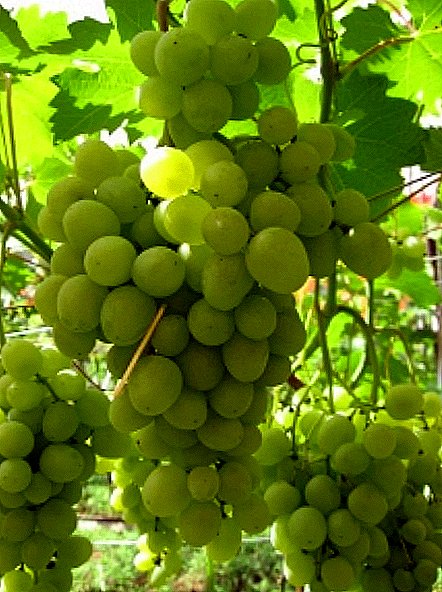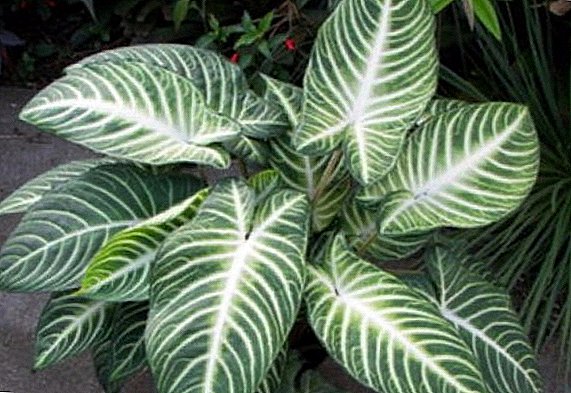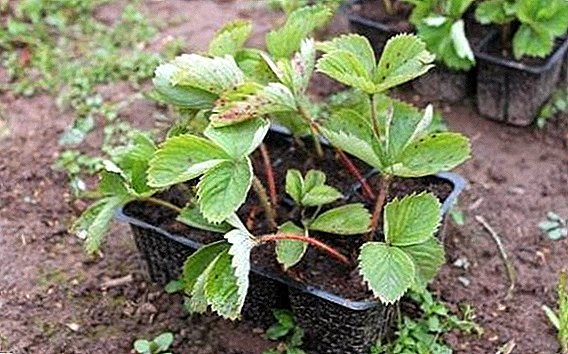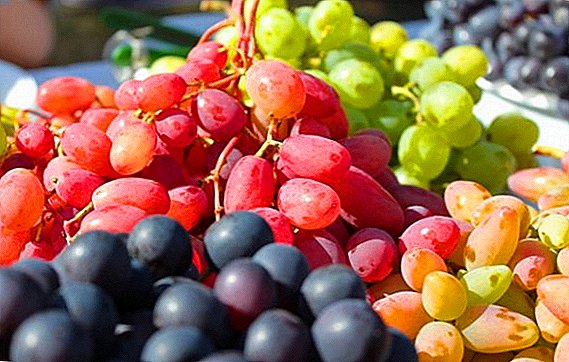 If the region where the gardener lives is known for the cold climate and twenty degrees of frost, this will not be an obstacle to the cultivation of vines. Our tips will help you choose the right frost-resistant varieties for laying the vineyard, provide care for it and get a good harvest.
If the region where the gardener lives is known for the cold climate and twenty degrees of frost, this will not be an obstacle to the cultivation of vines. Our tips will help you choose the right frost-resistant varieties for laying the vineyard, provide care for it and get a good harvest.
Covering and roofing varieties
In viticulture, there are no concepts of "covering and non-covering grapes," rather, it refers to one of the individual characteristics of any variety. For example, a vine grown in the Crimea or Krasnodar Territory as a non-roofing crop in the Moscow region needs a mandatory shelter for the winter.
Only the practitioner - the grower determines which species (covering or non-covering) include the cultivated variety. In the south of Russia, almost all varieties are grown without a winter shelter, but closer to the middle zone, some of the grape varieties need warming for the winter.
Although there are also frost-resistant grape varieties that tolerate short or long-term frosts perfectly. These varieties are very fertile even in the conditions of the Moscow region.
Video: winter hardy grapes
Unopen grape varieties include varieties obtained by breeders as a result of crossing cultivated grapes with the American variety Librusek. They have good frost resistance, early ripening, resistance to the main diseases of this culture, and care for them is simple and uncomplicated.
For non-growing cultivation such varieties are suitable:
- Aleshenkin;
- Value;
- Nadezhda Aksayskaya;
- Victor;
- Shun;
- Couder;
- Jupiter;
- Sovering Tiara;
- Alpha;
- The First Called
You will certainly be interested to get acquainted with the 10th of the best uncovered grape varieties.
 Beginner growers need to know: the young, immature vines winter shelter is always necessary, the plant is accustomed to the cold in stages, year after year:
Beginner growers need to know: the young, immature vines winter shelter is always necessary, the plant is accustomed to the cold in stages, year after year:- first year - the vine is covered;
- second year - shelter required too;
- the third year - the plant is partially covered, one sleeve is left uncovered for the frost resistance test, and in spring (for the surviving buds) the result will be clear.
Check out the best varieties of tomatoes, eggplants, carrots, plums, apricots, cherries, cherries, apple-shaped trees, strawberries and remontant raspberries for the Moscow region.
In addition to growing grapes in a covering or non-covering culture, it is practiced in the Moscow region to grow this heat-loving crop in greenhouses.
Frost winters are not so dangerous for a vine as thaws that replace each other and subzero temperatures. With established cold, plants can always be safely covered, and at unstable temperatures there is a danger that the well-covered vines will start to rot and become covered with mold under the shelter. 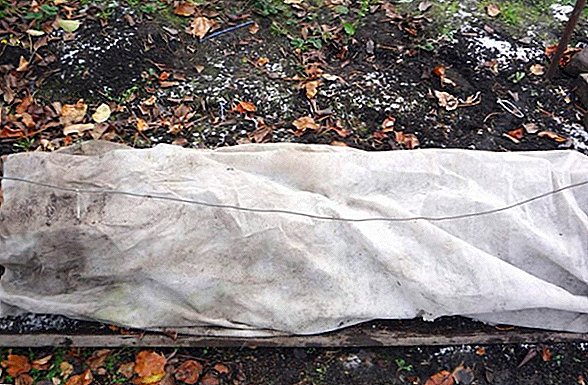
Frost-resistant grapes for the Moscow region, which can not cover for the winter
When choosing a variety for laying a vineyard in this region, you need to focus on the maximum subzero temperatures characteristic of this area. Also need to take into account the ripening time.
Early maturing varieties (early, early and mid-early) will be most suitable for the Moscow region. Also very important is their resistance to fungal diseases and pests.
Aleshenkin
Early ripe grapes, the ripening period of which does not exceed 118 days. The grape brushes are very large, well-branched, have the shape of a cone, the average brush weight is from 700 grams to 1.5 kg, but giants weighing up to 2.5 kg are also frequent!  The grapes are large (from 3 to 5 grams), oval in shape, the color of young light honey, with a slight wax coating. In every second grape there is no bone. The taste of Aleshenkin grapes is harmonious, sweet and juicy pulp is the standard of the best table grapes.
The grapes are large (from 3 to 5 grams), oval in shape, the color of young light honey, with a slight wax coating. In every second grape there is no bone. The taste of Aleshenkin grapes is harmonious, sweet and juicy pulp is the standard of the best table grapes.
We recommend to get acquainted with the best varieties of early, nutmeg, white, pink, black, table, cold-resistant and technical grapes.
With good care in the third year of cultivation, the yield of one plant reaches 25 kg. Aleshenkin grapes have excellent frost resistance, with no losses can withstand temperatures down to - 26 C, but poorly resistant to fungal diseases.
This tendency is especially evident in wet, rainy weather. To avoid diseases, grapes need to be treated every two weeks with special preparations.
Video: Aleshenkin grape variety description
Victoria
Old, time-tested muscat grape variety. Early ripe, the peak of ripening is 110-120 days after flowering. Oval grapes are very large (6-7 grams), the skin and flesh are dark pink in color, the skin has a characteristic wax coating.
Victoria's berries are juicy and sweet, the skin is thin and has a tendency to crack during the rainy period. Well-ripened grapes on the vine acquire the taste and aroma of nutmeg. The berries in the hands are loose, the brush itself is loose, the mass of one bunch is from 500 grams to 1 kilogram.
Victoria carries a good transportation over long distances, looks nice and appetizing. The grade is commercial. Due to the high sweetness of the berries, the wasps are severely affected, to protect them from insect damage, in private households the spicy grapes are packed in special bags of agrofibre. This variety tolerates frosts up to - 26 C. 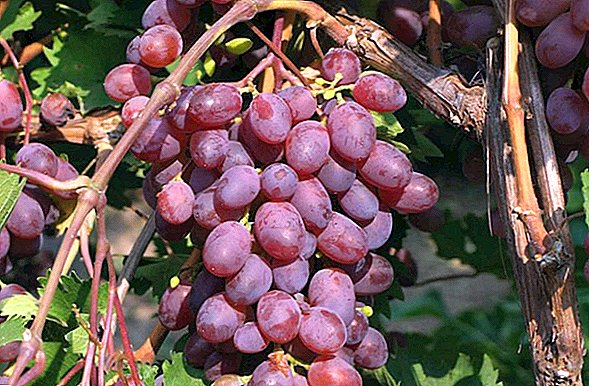
Did you know? In the Japanese city of Ishikawa, a buyer who chose to remain anonymous purchased a bunch of grapes "Ruby romans". This purchase cost him $ 5,400. The bunch consisted of thirty huge grapes, each grape was the size of a small chicken egg. The price of one berry was 180 dollars.
Kuderka
Winegrowers know this variety under two names: Kuderka or Kudrik. The yield of this late variety is simply amazing - on one adult plant it ripens up to 100 kilograms of berries. Dark blue round fruits (with stones) are very sweet, thanks to which the wine made from the berries of this variety is prepared without adding sugar.
The brushes are medium and large, the weight is up to 300 grams, the shape of the brushes is in the form of a cylinder or a cone, of average density; sometimes they are also loose. A Kuderka is undemanding and winter-hardy, it is not afraid of frosts up to -30 C, it is easy to care for it.  Does not have a tendency to fungal diseases (mildew, oidium), but has insufficient natural resistance to phylloxera, and therefore needs to be sprayed with special preparations. From Kuderki produce excellent fortified wines.
Does not have a tendency to fungal diseases (mildew, oidium), but has insufficient natural resistance to phylloxera, and therefore needs to be sprayed with special preparations. From Kuderki produce excellent fortified wines.
Lydia
Mid-season variety, the first ripe berries appear 150-160 days after flowering. Plant of medium vigor, berry tassels are not very large. Cluster weight is about 100 grams, grapes are round or slightly oval, with dark red skin and flesh. There is a wax on the skin that gives it a light pink-purple hue.
The taste of Lydia is harmonious, sweet and sour with a strawberry flavor. Sugar varieties - 19-20%. A pleasant feature of the variety is the strawberry smell. The longer the grapes hang out on the vine, the richer and sweeter their taste will be. The harvest from one adult plant reaches 40-42 kilograms of berries.  Lydia has excellent resistance to such diseases of grapes as mildew and oidium, and also normally reacts to overwetting of the soil. The vine is quite frost-resistant, it tolerates freezing temperatures down to - 26 C, in the southern regions it is grown as an unopened crop.
Lydia has excellent resistance to such diseases of grapes as mildew and oidium, and also normally reacts to overwetting of the soil. The vine is quite frost-resistant, it tolerates freezing temperatures down to - 26 C, in the southern regions it is grown as an unopened crop.
Jupiter
The variety of very early ripening period, from flowering to full ripeness, takes from 110 to 115 days. On medium-sized bushes very large grape clusters ripen, the average weight in the brush is 300-500 grams. Brushes in the form of a cylinder or a cone, have an average density (there are also loose).
The color of the berry ranges from dark red to blue-violet. The hue of the berries depends on the degree of ripeness of the bunch. Large berries (4-6 grams) have an elongated oval shape, sweet flesh and a light nutmeg aftertaste. The sugar content in the pulp is from 21% and higher. Frost resistance up to - 27 C, good resistance to fungal diseases. 
Did you know? According to the ancient Greek legend, the god of viticulture, Dionysus, having assumed the appearance of a beautiful young man with a bunch of grapes in his hands, passed through the whole Earth. Where the young god passed, the fertile vine was taken and spread its leaves. So people have learned to grow sunny berries, which have given them thirst quenching, health and joy.
Sovering Tiara
This vine ripens very early, the first berries are ripening already in mid-August. The plant is vigorous, the bushes are powerful, razlohie. Productivity is good. Brush of grapes weighs up to 200 grams (medium), berries are small (2-4 grams), round, white.
Due to the short berry cuttings (from 3 to 5 mm), the arrangement of the grapes in the bunch is very dense. The taste is pleasant, sweet and sour. Frost resistance of an adult (from 3 years) vines reaches - 30 C. The variety of table purpose. 
Valiant
Grapes with a powerful structure of the bush, on thick vines matures many small berry brushes (length 8-10 cm, weight 80-100 g). The variety is early, mass ripening occurs in the last decade of August or the first decade of September (depending on the weather).
Many are looking for answers to such questions: how to plant grapes in spring, when and how to grape grapes, whether to care for grapes during flowering, how to transplant and not damage grapes, how to grow grapes from chubuk and bone.
The grapes are blue-black, round, small with poorly separated skin from the flesh and a rather large bone. The berries are tightly located in the brush. The sugar content in the pulp is from 18 to 20%. Productivity and frost resistance is excellent.
The mature, well-ripened vine does not freeze out even at frost down to -45 C. Valiant Grapes are used to make red wine, but it can also be used as a sort of table purpose. A distinctive feature of the variety is a light strawberry flavor. 
Did you know? There is an ancient belief which says that the color and sweetness of grapes depends on the time of day when they are ripe. If the bunch of grapes ripened at sunrise, then their skin will get the shade of the morning dawn, if at noon, the rays of the sun will color them in the color of melted gold. Grapes ripening in the evening and at night will turn blue and black (the colors of the night sky).
Phenomenon
A grade of table appointment with cone-shaped large clusters, the average weight of a cluster is from 0,5 kg to 1 kg. Bush average strength growth. Berries are white-yellow (8-10 g), oval-shaped, with a sweet-sour taste. The sugar content of berries is 20-22%.
Mass ripening of brushes begins in the second decade of August and lasts until mid-September. The mature vine is frost-resistant, it survives frost-free up to -24 ° C without losses. On one hectare of an industrial vineyard, the yield reaches 140 centners. 
Alpha
Wonderful frost-resistant variety from the North-American group of varieties obtained from crossing with Librusek. This variety carries frost up to - 35 C without damage. The vine is lianoobrazny, its lash reaches 9 meters, the leaf plate is very large (25 cm long and 20 cm wide).
The variety is medium late, flowering occurs in mid-June, and the peak of fruiting is 140-150 days. Clusters of medium size, have a cylindrical shape, dense. The grapes are medium in size, round, dark blue (almost black) in color with a red or purple hue.
The flesh is quite sour, slimy, has a light strawberry flavor. The skin of grapes is covered with a gray wax bloom. The yield of this variety is very good, with proper care you can get up to 10 kg of berries from one plant. 
In industrial cultivation, the yield reaches 180 centners per hectare. Alpha is very resistant to major diseases of the grape and grape vine, but it easily gets chlorosis. This grade is used for dressing by green lianas of personal plots, arbors, fences.
Did you know? In the biblical address of Jesus Christ to his flock, he metaphorically identifies himself with the vine, and God the father - with a caring and hardworking winegrower.
Buffalo
A variety of early ripening, in the Moscow region, the beginning of fructification is in the middle of September. Bushes are powerful, vigorous, young shoots before frost have time to mature well. Grape brushes in the shape of a cone, medium size, dense. The large berry is round, slightly oval, large.
Color is black-blue, a peel with a gray wax bloom. The taste is harmonious, sweet and sour, with a forest pear aftertaste. Sugar content - 18-21%, yield for industrial cultivation - up to 120 centners per hectare.  Buffalo has a good frost resistance (- 28 C), the plant has little mildew or gray rot of berries. Buffalo grapes are used to make table wines and juices.
Buffalo has a good frost resistance (- 28 C), the plant has little mildew or gray rot of berries. Buffalo grapes are used to make table wines and juices.
Tips for growing grapes in the suburbs
For those without experience in viticulture, we can recommend a long-term cultivation of seedlings in the nursery (shkolke). Young saplings (grown from cuttings in a hotbed) in the second year of life are transplanted into two-liter bulk containers with openings for water flow at the bottom.
These containers are also installed in the shkolka, the space between them is half filled with soil. Young plants remain on growing in the nursery until full maturity. A sign that it is time to replant the plant to a permanent place will be the first full grape clusters.
Growing in shkolke simplifies the care of cuttings: they are easier to water, harden, process from pests and shelter from frost. At the beginning or in the middle of November, containers with saplings are moved to the basement for wintering.  Growing grapes in shkolka Spring (May 20-25), they are transplanted to a permanent place by the method of careful handling, without damaging the roots. This technology of growing young grapes developed by experienced growers and is used for the early start of fruiting seedlings.
Growing grapes in shkolka Spring (May 20-25), they are transplanted to a permanent place by the method of careful handling, without damaging the roots. This technology of growing young grapes developed by experienced growers and is used for the early start of fruiting seedlings.
Choosing a place
- Priming. The most suitable soils for the vineyard are black soil or sandy soil. The soil with sand is even better than chernozem, thanks to its loose structure (drainage), it better passes heat and freezes faster. Absolutely unsuitable for growing grape swampy lowlands, in such places the plants will rot the roots.
- Direction. The vines are excellent fruit on the slopes (prefer southern or south-western direction). If the site does not have natural slopes, and the south side of the house does not have space available for planting, then it is recommended to build a fence out of planks or a fence (two meters high enough). Such a structure is oriented from east to west.
- A place. When planning a vineyard, a well-lit place is selected, inaccessible to the cold northerly wind. As a windproof structure can serve as a high fence or wall of the house.

Landing
Three ways to lay a vineyard
- Landing in the pit. To lay a vineyard on sandy soil for each plant, a planting pit with dimensions of 80x80x100 cm is prepared; in a black earth soil, a pit size of 80x80x80 cm is sufficient.
- Landing in the trench. Young grape saplings are planted in this way on sandy soils. The depth of the trenches should reach 80 cm, and their width is brought to 1 meter. The trench should be located from south to west.
- Landing in high ridges. Poorly drained soil (loam or clay) is not sufficiently heated by the sun, so on such grounds grapes are planted in highly filled (up to one meter) embankment. Old Russian name of such landing embankments - "worked."
Did you know? The title of the largest bunch of grapes today remains for the Chilean record holder, its weight was 9398 grams. Such a wonderful bunch grew in 1984 in Chile.

Landing time - growing grapes in the suburbs, you need to take into account that the first frosts can begin quite early, and the plant does not have time to get stronger and mature. Therefore, during the spring disembarkation, the most favorable time for planting is the third or fourth decade of April.
During the autumn planting, the optimal period falls on the whole of October, at this time there is still quite warm and a lot of moisture. Autumn grapes can be planted before the onset of the first frost. In order not to be disappointed in the cultivation of this crop in the future, a gardener needs to choose the right seedling.
Rules for the purchase of seedlings
- Buy young grapes at the end of March or in April.
- A good two-year-old sapling will have strong and lush bright roots.
- Before planting, purchased seedlings should be soaked in a special preparation for protection against the aphid (phylloxera). The preparations “BI-58” or “Kinmiks” are perfectly suitable for this purpose; a double dose is taken for soaking the cuttings: 2 ml of the preparation is added to 10 liters of water. Saplings are put into the solution for 30 minutes, then they are washed in clean water.
- Приобретенные в марте-апреле двухлетние саженцы высаживаются в пятилитровые контейнеры (можно в дырявые ведра) и выращиваются в перфорированном пленочном укрытии (школке, временной теплице) или на южном подоконнике, лоджии.
ВИдео: как выбрать саженцы винограда Лучше всего обратиться за приобретением саженцев винограда к садоводам - коллекционерам с хорошей репутацией или же купить нужный сорт в плодовом питомнике.
Both in the first and in the second cases, it is desirable to personally see at the site with the seller how this variety is grown, how it bears fruit, find out how the seller recommends caring for this grape variety.
Buying seedlings from reliable sellers, you can be sure that in the end it will grow exactly the variety that you wanted to purchase. Do not purchase grape seedlings in spontaneous markets.
Proper care
Grapes are grown only on well-fertilized soil. To do this, in the autumn digging in the soil contribute organic matter, and in the spring the vineyard is fed liquid mineral dressing.  The rate of making organic autumn Feeding is carried out in October. In the root layer of each plant, a bucket of cattle manure is laid out on top of the soil and 50 grams of ammonium nitrate, 50 grams of potassium salt and 100 grams of superphosphate are evenly scattered. After that, the soil is dug up on the spade bayonet so that all fertilizers are deeply covered with soil.
The rate of making organic autumn Feeding is carried out in October. In the root layer of each plant, a bucket of cattle manure is laid out on top of the soil and 50 grams of ammonium nitrate, 50 grams of potassium salt and 100 grams of superphosphate are evenly scattered. After that, the soil is dug up on the spade bayonet so that all fertilizers are deeply covered with soil.
You will be useful to read about how to properly water and feed the grapes in spring and autumn.
The rate of application of liquid mineral fertilizers in the spring and early summer This dressing is carried out twice: before the grapes bloom and after the first ripe berries begin to appear.
On one adult vine bush: top dressing is prepared as follows: 20 grams of superphosphate and 10 grams of ammonium nitrate dissolve in 10 liters of water. The solution is applied under the root during watering.
Video: when and how to feed grapes
Important! If mineral and organic supplements are combined, the application rate of each component is reduced by 50%.
Loosening - The soil under the vineyard must be constantly kept loose and clear of weeds, for this purpose, up to ten soil treatments are carried out during the summer.
Watering - after the plants are planted, they must be watered abundantly (at least 30 liters under one bush) twice a month. In the future, the frequency of irrigation decreases, because the climate in the Moscow region is rather humid.
For the convenience of watering or applying liquid fertilizer near each bush, you can install a special capacity for watering. This can be either a five-liter plastic bottle with a cut-off bottom (dug into the ground down the neck), or a dug old bucket dug near the roots.  Such uncomplicated "know-how" will ensure the delivery of moisture or fertilizers directly to the roots of the grapes. If the planted grape variety is table, then after 3 years the irrigation tank is replaced with a meter pipe (asbestos or metal) dug vertically down.
Such uncomplicated "know-how" will ensure the delivery of moisture or fertilizers directly to the roots of the grapes. If the planted grape variety is table, then after 3 years the irrigation tank is replaced with a meter pipe (asbestos or metal) dug vertically down.
For technical (wine) grape varieties, at the same time, the temporary tank for irrigation is completely removed, since the moisture of such varieties is extracted from the roots of deep water layers.
The described irrigation technology is suitable for young plants. Watering of adult grapes is limited to abundant spring and autumn irrigation. About a week before the flowering of the vines begins, the watering stops, as excessive moisture can cause shedding of flowers, that is, the loss of most of the crop.
Important! Grape bushes watered only at the root! Watering by sprinkling over the leaf (as well as prolonged rains) can trigger an outbreak of fungal diseases. In the Moscow region is best to grow grapes under a transparent canopy of polyethylene.Video: correct watering of grapes
Trimming and shaping - summer shoots on young bushes pinch (cut with shears) at a height of 1.7 m. This will not allow the young plant to deplete its strength in the growth of unnecessary lashes and allow the vine to mature well to frost.
Proper formation of young grapes: varieties with low resistance to frost are covered by groups. It is these varieties that are recommended to be formed by the fan or cordon formation. Frost-resistant grape varieties do not hide for the winter, so they use standard or arbor shaping.
Learn more about the correct pruning of grapes in spring, summer and autumn.
Shelter for the winter - young varieties (even frost-resistant) in the first year of life must cover for the winter. The ground part of the young bush is wrapped with spunbond or agrofiber, its root zone is covered with a layer of sawdust 5-7 cm thick.
Before the onset of serious frosts, the plant is laid on the ground and covered with plant debris (leaves, needles, fir branches, corn stalks or sunflower stalks), as well as special wooden rectangular boxes.  At the onset of spring thaws, winter shelters are immediately removed, as the delay threatens to blow out the grapes.
At the onset of spring thaws, winter shelters are immediately removed, as the delay threatens to blow out the grapes.
How to determine whether it is time to remove shelters from the wintering grapes and whether the plant will suffer from the spring frosts? In the spring, after melting snow and sustained warming (5-7 degrees Celsius), shelters are removed from the plant, but they are temporarily left to lie near the vineyard.
So the grower insures against the case of sudden return frosts (if necessary, materials for shelter are at hand and it is not difficult to wrap the bushes with them again). All this time, the vine remains lying on the ground, tying the lash on the trellis is possible only in early May, when the threat of frost returning will recede.
Important! It is impossible to take fresh straw of this year as a winter vegetable insulation for a vineyard. It attracts to wintering under the grape shelters of field mice gnawing the stems and roots of bushes. At the same time, last year’s, semi-ripe straw is perfectly suited for this purpose. - she is light, warm and mice do not like her unpleasant smell.Video: when to open grapes
Did you know? At the Crimean exhibition-competition "Golden Bunch of Grapes" in 2009, the winner was the grower S. Ilukhin, who lives in the Dzhankoy District. They were given to evaluate the competitive jury huge grape brush varieties "Transfiguration". The mass of the bunch was 8600 grams!We hope our advice will help you in laying a young vineyard in the Moscow region and its subsequent cultivation. We wish you a generous harvest of sunny wine berries!
Reviews from the network






